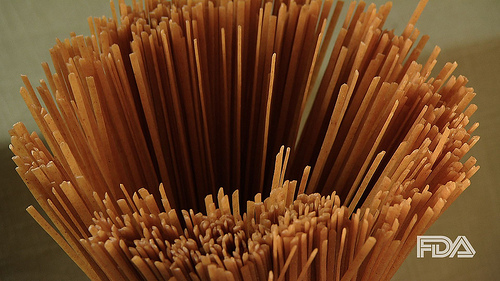10 Tips to Help You Eat Whole Grains
Any food made from wheat, rice, oats, cornmeal, barley, or another cereal grain is a grain product. Bread, pasta, oatmeal, breakfast cereals, tortillas, and grits are great examples. Grains are divided into two subgroups, whole grains and refined grains. Whole grains contain the entire grain kernel—the bran, germ, and endosperm. People who eat whole grains as part of a healthy diet have a reduced risk of some chronic diseases. Here are ten tips that should help you eat more whole grains and start eating healthier:

-
Make simple switches
To make half your grains whole grains, substitute a whole-grain product for a refined-grain product. For example, eat 100% whole-wheat bread or bagels instead of white bread or bagels, or brown rice instead of white rice.
-
Whole grains can be healthy snacks
Popcorn, a whole grain, can be a healthy snack. Make it with little or no added salt or butter. Also, try 100% whole-wheat or rye crackers.
-
Save some time
Cook extra bulgur or barley when you have time. Freeze half to heat and serve later as a quick side dish.
-
Mix it up with whole grains
Use whole grains in mixed dishes, such as barley in vegetable soups or stews and bulgur wheat in casseroles or stir-fries. Try a quinoa salad or pilaf.
-
Try whole-wheat versions
For a change, try brown rice or whole-wheat pasta. Try brown rice stuffing in baked green peppers or tomatoes, and whole-wheat macaroni in macaroni and cheese.
-
Bake up some whole-grain goodness
Experiment by substituting buckwheat, millet, or oat flour for up to half of the flour in pancake, waffle, muffin, or other flour-based recipes. They may need a bit more leavening in order to rise.
-
Be a good role model for children
Set a good example for children by serving and eating whole grains every day with meals or as snacks.
-
Check the label for fiber
Use the Nutrition Facts label to check the fiber content of whole-grain foods. Good sources of fiber contain 10% to 19% of the Daily Value; excellent sources contain 20% or more.
-
Know what to look for on the ingredients list
Read the ingredients list and choose products that name a whole grain ingredient first on the list. Look for “whole wheat,” “brown rice,” “bulgur,” “buckwheat,” “oatmeal,” “whole-grain cornmeal,” “whole oats,” “whole rye,” or “wild rice.”
-
Be a smart shopper
The color of a food is not an indication that it is a whole-grain food. Foods labeled as “multi-grain,” “stone-ground,” “100% wheat,” “cracked wheat,” “seven-grain,” or “bran” are usually not 100% whole-grain products, and may not contain any whole grain.
For tips on teaching your kids to make healthier food choices click here.
